Moog is using this year’s DSEI to push its Reconfigurable Integrated-weapons Platform (RIwP) as a flexible solution for British Army requirements ranging from counter-drone to anti-armour missions.
At its largest UK showing to date, Moog has a dedicated stand in the Land Zone (N2-440) where two full-sized RIwP turrets are on display. One is configured for the Army’s Specialist Counter-Uncrewed Aerial Systems (C-UAS) role, mounting a 30x173mm XM813 dual-feed cannon alongside a 7.62mm machine gun.
The second makes its world debut in an anti-armour configuration, fitted with four Brimstone missiles, a 30x113mm XM914 cannon and a 7.62mm machine gun. Moog highlights that the same base hub design can switch between mission sets, offering both Force Overwatch and generalist C-UAS capability.
The company is also partnering with General Dynamics Land Systems UK to display a short-range air defence variant of RIwP on the Foxhound protected patrol vehicle. That system combines Starstreak or Martlet missiles, a 30x113mm cannon, 7.62mm machine gun and Thales optics, intended to show how light forces could gain significant firepower through the modular turret.
Moog argues that the value of RIwP lies in commonality: one “weapons hub” that can host different effectors and sensors while simplifying training, spares and maintenance. The design is also pitched as “spiral upgradeable,” with the ability to swap in new effectors as threats evolve.
Richard Allen-Miles, EMEA Capture Lead at Moog, said the show was an opportunity to demonstrate that flexibility. “The flexibility to meet multiple requirements with various effectors and sensors, yet retain commonality across mission sets, is what makes RIwP so special,” he said.
Alongside the full-scale turrets, a one-third scale model is on the UK Defence & Security Exports stand, with Moog signalling that RIwP could be manufactured in Britain if selected for Army programmes.


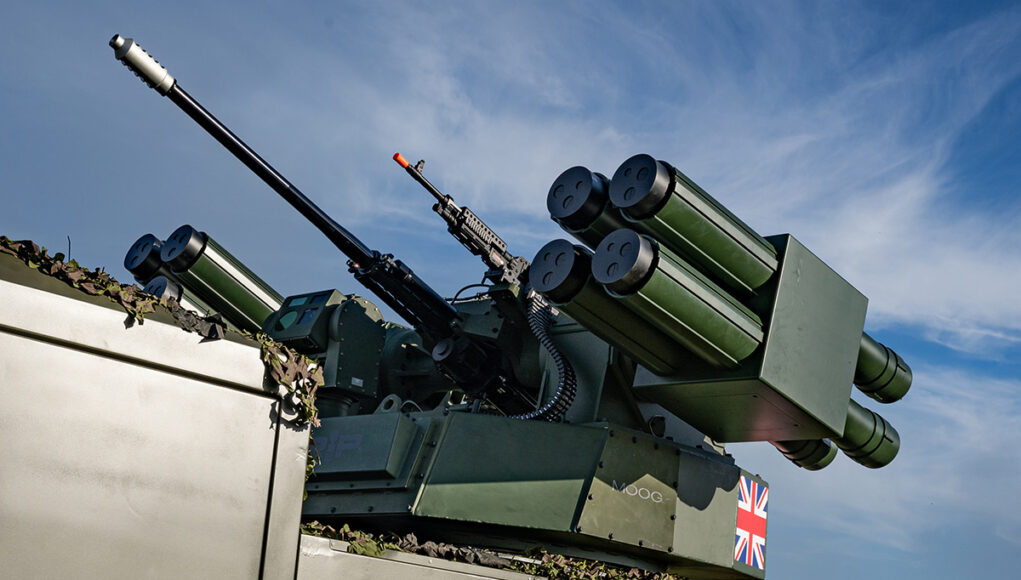
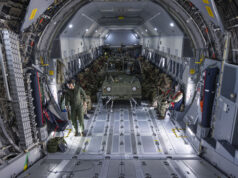



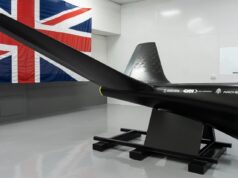


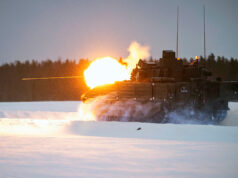

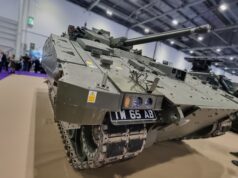

Moog on a Supacat HMT looks great.
Ill-tempered Supacats with lasers attached to their fricking heads would also be nice.
Always been a big fan of their synthesisers 😏
Separate companies founded by cousins, I’m afraid.
Robert Moog invented the synthesiser and Bill Moog invented the electrohydraulic servo valve.
Could these be fitted to Boxer?
It would be firepower upgrade if it could.
There’s the Boxer Skyranger 30mm ir 35mm with 2×4 missile lsuncher plus radar. Wonder if the UK would buy some of those for base and mobile Army shorad to complement Skysabre? The Moogs look a lot simpler set-up but still pretty punchy. Could they even pair up these 1×4 or 2×4 type HVM/LMM launchers succesfully pn the RN 30mm mounts? Could offer cheap SAM cover for opvs and lightly armed vessels.
I’m very surprised that Moog hasn’t offered a version of their turret with 2 to 4 ASRAAMs, along with a 30mm cannon or 7.62 machinegun. They do versions with Brimstone, Starstreak/LMM, Stinger etc, for both light & heavy vehicles, so I’d have thought it’d be a no-brainer. Put it on a Supacat, Foxound, Boxer, whatever you want: greater range & capability against tougher threats where LMM or Starstreak doesn’t have the legs.
Maybe it’d be too heavy unless they designed the turret servos? Or they now prefer having enclosed launchers after the exposed Hellfire woes with Stout (which now has eight Stingers, instead of four Stingers & two completely exposed Hellfires), so they’d have to make a new box launcher? Unless the UK wants to go with a “Boxer with ASRAAMs” approach that Germany is doing with IRIS-T on their Boxers? Germany is also having truck IRIS-T SLM for longer range protection for units further back, the Boxer IRIS-T is for close protection…
ASRAAM is about 90kg, whilst Brimstone is 50kg. So a Moog turret should at least be able to carry two ASRAAMs, though four would be the preference. The Boxer/Iris-T combination could easily be copied instead with ASRAAM. Though Diehl have managed to put their Iris-Ts in a ready use launch container, which ASRAAM currently does not have. But I’d imagine that’s on the cards, as when it’s being carried on the launcher for a long time, it should have environmental protection. Plus the containers could be slightly armoured to protect the missile from shrapnel etc.
The current Raven setup, is still pretty Heath Robinson, but has proven to be highly effective. But it’s no Stormer replacement. Longer term, more consideration will needed on how to protect ASRAAM from the elements. Where it probably needs protection from shrapnel and near misses. It uses a very simple firing sequence and a military off the shelf (MOTS) electro-optic turret to search for and track targets. Using what were traditionally within visual range air to air missiles (WVRAAMs) for ground based surface to air use, has answered the problem against the use of long range stand-off anti-tank guided weapon, that are now being fired at 10km or more by Russian attack helicopters. This use has shown it has closed the gap between short range air defence (SHORAD) and medium range surface to air missiles (SAMs). To use ASRAAM to its full potential, it really needs a better method for target searching over the current EO turret, which a small very high frequency (Ku or Ka band) radar would solve. Additionally, Raven uses a fixed launcher, whereas a 2-D moveable launcher that includes a machine gun, could then be used for self-protection, as well as against smaller drones.
For a Stormer replacement, I feel there needs to be one system, but mounted to two vehicles. The first would be Boxer, as that is protected vehicle, but can also self deploy where needed. This would be the vehicle used by the RAF Regiment and the Army. For the RAF, it would be used for protecting main operating bases (MOBs) and forward operating bases (FOBs). For the Army in a similar capacity but primarily to support armoured/light infantry. However, it must also be linked with Sky Sabre or what other air defences are used. The second vehicle would be an Ajax variant,. Where its employed to support mechanized brigades, as it must be able to keep up with Challenger.
I would imagine that if the Army put in a request for a Moog turret that could carry four ASRAAM, Moog would look at a developing a heavier design to meet the requirements. For me, I think the ideal solution for a Stormer replacement, would be a vehicle that carries on a 2D moveable turret, four ASRAAM, four LMM, a CTAS40 and a GPMG. As this would give a better balance over what targets could be engaged. With ASRAAM for fast air or longer ranged engagements against attack helicopters (>10km). LMM against slower moving air targets, additionally it does give a stand-off capability against ground vehicles and other ground targets. Where it has demonstrated that it is equally adept at taking out attack helicopters as it is against lighter armed vehicles and buildings. The CTAS40 with its programmable anti-air rounds, would be particularly useful for taking out the larger suicide/FPV drones. Plus it has a longer effective range than the 30mm Bushmaster. But it is equally adept against ground targets. The GPMG is for self-protection along with use against smaller drones. Though there would be nothing stopping it being used in the traditional anti-infantry suppression role.
If a Moog remotely operated turret could be fashioned to carry what’s mentioned above. To all intents and purposes the vehicle can be fairly agnostic, so long as it can handle the weight. Similarly the anti-air system would use the same sensors, combat management system, datalinks etc. So its only the vehicle integration that will take up the time/costs. But to my mind, the logical choice is to use what the Army already uses and not introduce yet another new vehicle, hence a Boxer and/or an Ajax variant.
Buy a few hundred of these with an appropriate sized turret ring, fit to refurbed warrior chassis and bobs your uncle.